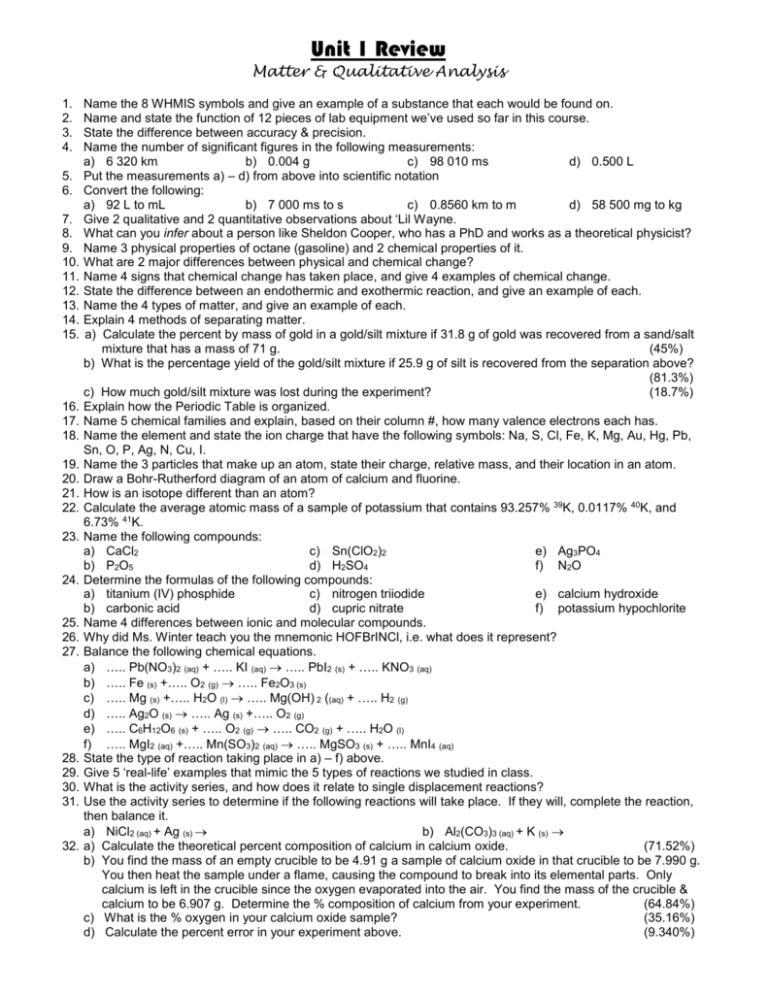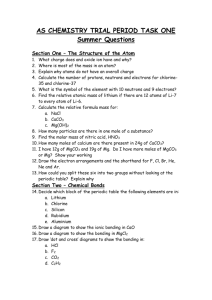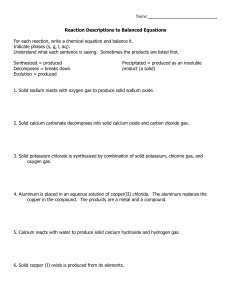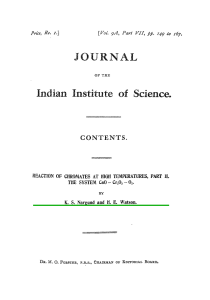matter = anything that has mass and takes up space
advertisement

Unit 1 Review Matter & Qualitative Analysis 1. 2. 3. 4. 5. 6. 7. 8. 9. 10. 11. 12. 13. 14. 15. 16. 17. 18. 19. 20. 21. 22. 23. 24. 25. 26. 27. 28. 29. 30. 31. 32. Name the 8 WHMIS symbols and give an example of a substance that each would be found on. Name and state the function of 12 pieces of lab equipment we’ve used so far in this course. State the difference between accuracy & precision. Name the number of significant figures in the following measurements: a) 6 320 km b) 0.004 g c) 98 010 ms d) 0.500 L Put the measurements a) – d) from above into scientific notation Convert the following: a) 92 L to mL b) 7 000 ms to s c) 0.8560 km to m d) 58 500 mg to kg Give 2 qualitative and 2 quantitative observations about ‘Lil Wayne. What can you infer about a person like Sheldon Cooper, who has a PhD and works as a theoretical physicist? Name 3 physical properties of octane (gasoline) and 2 chemical properties of it. What are 2 major differences between physical and chemical change? Name 4 signs that chemical change has taken place, and give 4 examples of chemical change. State the difference between an endothermic and exothermic reaction, and give an example of each. Name the 4 types of matter, and give an example of each. Explain 4 methods of separating matter. a) Calculate the percent by mass of gold in a gold/silt mixture if 31.8 g of gold was recovered from a sand/salt mixture that has a mass of 71 g. (45%) b) What is the percentage yield of the gold/silt mixture if 25.9 g of silt is recovered from the separation above? (81.3%) c) How much gold/silt mixture was lost during the experiment? (18.7%) Explain how the Periodic Table is organized. Name 5 chemical families and explain, based on their column #, how many valence electrons each has. Name the element and state the ion charge that have the following symbols: Na, S, Cl, Fe, K, Mg, Au, Hg, Pb, Sn, O, P, Ag, N, Cu, I. Name the 3 particles that make up an atom, state their charge, relative mass, and their location in an atom. Draw a Bohr-Rutherford diagram of an atom of calcium and fluorine. How is an isotope different than an atom? Calculate the average atomic mass of a sample of potassium that contains 93.257% 39K, 0.0117% 40K, and 6.73% 41K. Name the following compounds: a) CaCl2 c) Sn(ClO2)2 e) Ag3PO4 b) P2O5 d) H2SO4 f) N2O Determine the formulas of the following compounds: a) titanium (IV) phosphide c) nitrogen triiodide e) calcium hydroxide b) carbonic acid d) cupric nitrate f) potassium hypochlorite Name 4 differences between ionic and molecular compounds. Why did Ms. Winter teach you the mnemonic HOFBrINCl, i.e. what does it represent? Balance the following chemical equations. a) ….. Pb(NO3)2 (aq) + ….. KI (aq) ….. PbI2 (s) + ….. KNO3 (aq) b) ….. Fe (s) +….. O2 (g) ….. Fe2O3 (s) c) ….. Mg (s) +….. H2O (l) ….. Mg(OH) 2 ((aq) + ….. H2 (g) d) ….. Ag2O (s) ….. Ag (s) +….. O2 (g) e) ….. C6H12O6 (s) + ….. O2 (g) ….. CO2 (g) + ….. H2O (l) f) ….. MgI2 (aq) +….. Mn(SO3)2 (aq) ….. MgSO3 (s) + ….. MnI4 (aq) State the type of reaction taking place in a) – f) above. Give 5 ‘real-life’ examples that mimic the 5 types of reactions we studied in class. What is the activity series, and how does it relate to single displacement reactions? Use the activity series to determine if the following reactions will take place. If they will, complete the reaction, then balance it. a) NiCl2 (aq) + Ag (s) b) Al2(CO3)3 (aq) + K (s) a) Calculate the theoretical percent composition of calcium in calcium oxide. (71.52%) b) You find the mass of an empty crucible to be 4.91 g a sample of calcium oxide in that crucible to be 7.990 g. You then heat the sample under a flame, causing the compound to break into its elemental parts. Only calcium is left in the crucible since the oxygen evaporated into the air. You find the mass of the crucible & calcium to be 6.907 g. Determine the % composition of calcium from your experiment. (64.84%) c) What is the % oxygen in your calcium oxide sample? (35.16%) d) Calculate the percent error in your experiment above. (9.340%) 33. a) b) 34. a) b) c) 35. 36. 37. 38. 39. 40. 41. 42. Explain how Empedocles’ theory of matter differed from Democritus’ theory of matter. How did Bohr & Rutherford’s model of the atom differ from Thomson’s? What is the electromagnetic spectrum? How are frequency and wavelength related in terms of energy on the EM spectrum? Name 5 types of energy found on the EM spectrum, and state which ones are safer for humans and which are more harmful. How is absorption of energy different than emission? Bohr used hydrogen to prove that when electrons absorb energy, they jump to a higher shell. Why do electrons moving back to their ground state produce a pattern of bands in a line spectrum? Draw what hydrogen’s (emission) line spectra looks like in a spectroscope. Explain how you can identify the composition of a star or the purity of a diamond based on your knowledge of emission line spectra. Identify the element that produces the following colour under a flame: a) green b) red c) yellow d) pinkish-red How do elements produce a single colour under a flame if their line spectra are composed of several bands of different colours? Explain what fireworks are made of and how you can prove the metals that are contained in them. Apply what you learned in this unit to explain how counterfeit money is detected, how an MRI machine generates an image, or how qualitative analysis is used in forensic science. Given on test: 4 equations below, nomenclature help sheet (same as quiz), Periodic Table








